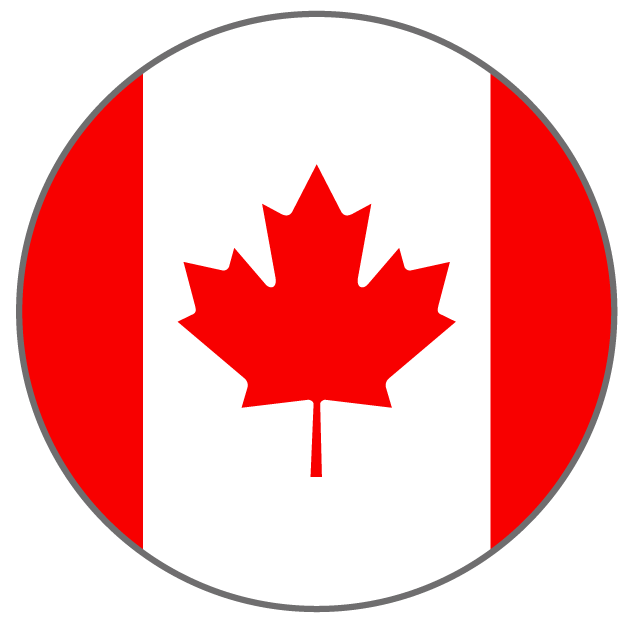Highlights
- A softening economic growth backdrop has left central banks in Canada, the Euro Area, and the U.K. on hold.
- In the US, Persistent easing in labour market conditions (despite stronger-than-expected November payroll data) and early signs of slower spending have led to a flatter yield curve and a weaker USD into December.
- We anticipate slowing economic conditions to spark rate cuts in 2024, starting with the Fed and the BoC around mid-year.
- Interest rates will be slower to come down than they were to go up. Inflation scares over the last year(s) will warrant a gradual and more cautious easing cycle from the central banks.
- Topic in focus: Is a softening economy risking Canada’s AAA credit rating? Canada stands middle to lower of the pack among AAA rated economies when it comes to key metrics that influence sovereign ratings. There is still a large gap between Canada and the median of AA rated economies, but that can change quickly, given an already large government deficit and softening domestic economic outlook.
Where is the dove?
The Canadian economic backdrop continues to soften with a string of downside data reports confirming the relative under-performance from other economies. GDP in Q3 contracted by a larger than expected 1.1% (annualized) in Canada, led by slowing business investment and flat household spending. That’s below the blockbuster 5.2% increase in the US, a 0.1% (not annualized) decline in euro area and the flat reading in the U.K. all in the same quarter.
Delinquencies for non-mortgage loans have continued to rise in Canada, as households continue to face challenges related to softening labour market trends and high cost of living. Sentiment has taken a nosedive as a result. November marked the lowest reading of consumer confidence since the pandemic in Canada, weaker than the lows during the Global Financial Crisis. Canadian households have already started to save more out of precaution, and ahead of further increases in mortgage costs as higher interest rates continue to feed through to fixed rate contracts with a lag. In contrast, consumer confidence has flatlined in the U.S. and have even started to rebound in the euro area and the U.K., after having already bottomed out a few quarters earlier.
The silver lining amidst soft economic data is that inflation has been slowing – even in the United States where the economic backdrop has been much stronger. And that has allowed central banks to pull back on hawkish rhetoric. None of the central banks we cover will be in a rush to shift to outright interest rate cuts. Fed Chair Powell continues to push actively against discussion around easing monetary policy, calling them “premature”. But we continue to expect the outperformance of the U.S. economy will fade with early signs that labour markets are indeed softening, and that consumer spending is slowing. We expect the Fed and the BoC to shift to gradual interest rate cuts by mid-2024 with the ECB and the BOE on hold until early 2025.
Central Bank
Current Policy Rate
(Latest Move)
Next move
 BoC
BoC
5.00%
+0 bps in Dec-23
0 bps
in Jan-24
 Fed
Fed
5.25-5.50%
+0 bps in Nov-23
0 bps
in Dec-23
 BoE
BoE
5.25%
+0 bps in Nov-23
0 bps
in Dec-23
 ECB
ECB
4.00%
+0 bps in Dec-23
0 bps
in Dec-23
 RBA
RBA
4.35%
+0 bps in Dec-23
+25 bps
in Feb-24
Keeping an eye on Canada’s credit rating
Canada is one of the few countries in the world with a AAA credit rating from at least two of the top global rating agencies.
That was the case with all three leading rating agencies since the early 2000s, until Fitch downgraded Canada in the summer of 2020 due to sharply expanding government pandemic deficits and spending. In August this year the U.S. also lost its own coveted top-tier ranking from a second rating industry (Fitch) on concerns about repeated contentious political debt ceiling debates. And just a week ago, Moody’s hit China with a downgrade warning, citing concerns related to the property market downfall on top of mounting local government debt.
Virtually all borrowing costs in the economy are determined in markets as a spread off government (‘risk-free’) interest rates. In an event where sovereign debt rating’s downgraded, those government interest rates can rise and push all other business and household borrowing rates higher alongside, tightening financial conditions.
Ratings for subnational entities, including those of the provincial governments also tend to correlate closely with the sovereign’s rating. In Canada, most provincial credit ratings were not immediately downgraded alongside Canada’s national rating in 2020. BC for an example, was placed on negative watch before also getting a downgrade a year later, in the summer of 2021. And after Fitch downgraded France’s sovereign in late April this year, close to three quarters of French entities that also received a rating from Fitch were downgraded alongside.
The good news is when it comes to metrics that are typically key to determining sovereign credit rating, Canada’s ranking remains adequate, suggesting no imminent downgrade in sight. Government and private sector debt levels are elevated but not outside of the range of other AAA rated economies. Canada also has a strong banking sector, a credible central bank, and a relatively stable political landscape. In addition, its net external position has improved steadily over the last decade.
Still, most of those metrics can deteriorate quickly in a soft economic backdrop – and the economy has been wobbling under the weight of growing headwinds from higher interest rates.
Where Canada ranks well:
- Gross debt levels are high, but net government debt not out of step with other AAA rated economies
Gross government debt levels in Canada are significantly higher than other AAA rated economies, but in large part due to Canadian pre-funding future pension liabilities. Net public debt levels are much lower once taking into account a large stockpile financial assets, including pension assets.
Higher gross debt levels still mean that public debt servicing costs are substantially higher in Canada than other AAA rated economies. The ratio of government interest payments to revenue is the highest in Canada (~7% in 2022) among all AAA countries, but still much lower comparing to the 12% median across AA rated countries.
The ratio of private sector debt to GDP in Canada is substantially higher than historically has been the case, in part driven by expanding household and corporate balance sheets during periods when interest rates were low. But those ratios have also been moving higher elsewhere and Canada still ranks in the middle of other AAA rated economies.
The Canadian debt servicing ratio is notably higher for private non-financial sectors in Canada however. That likely at least in part reflects higher sensitivity and a faster pass-through of tightened monetary policy to household and business debt payments, with others likely to catch up over time – pre-pandemic, Canada ranked around the middle of AAA rated economies on debt servicing ratios.
- Resilient financial sector
Canada ranks relatively well when it comes to resilience in the financial sector, with backing from an independent central bank and well-capitalized commercial banks. Canada ranks top of the pack among AAA economies in both IMF’s Financial Development Index that captures access, depth and efficiency of financial institutions and markets.
Canadian banks are relatively well capitalized – the tier one capital ratio among Canadian deposit takers was at just over 15% in 2022 – the second lowest among other AAA economies (just above Australia) but still well above regulatory minimums.
- Sound monetary credibility and political stability
The inflation scares over the past two years tested the central banks’ credibility. But the aggressive interest rate hiking cycle to wrestle inflation back under control, as painful as it’s been to households has also reinforced the central bank’s independence. Near-term inflation expectations remain elevated in Canada but longer run expectations have stayed well anchored, at closer to the 2% target. That signals confidence in the central bank ability to restore low and steady inflation over the longer run.
In terms of political stability, Canada ranks at the 90th percentile for various sub-indices on governance including corruption control, voice and accountability, government effectiveness etc., according to the World Bank’s Worldwide Governance Indicators (WGI). Canada’s ranking on political stability and absence of violence and terrorism has deteriorated over the recent years, ranking at the 74th percentile among all countries ranked in 2022. But that was still above other AA economies like the U.S. (45 percentile), the U.K. (62 percentile) or France (56 percentile).
- A different, stronger external position from the 90s
When S&P and Moody’s downgraded Canada’s sovereign debt rating in the early 1990s, concerns were that a depreciating Canadian dollar could lead to further deteriorations in Canada’s already large net international debt position – worth -45% of GDP in 1994 – piling on to negative impacts from the fiscal crisis at the time. The weak external position and the exposure to a currency shock led Wall Street Journal at the time to famously label Canada as an “honorary member of the third world”.
The Canadian dollar currently exchanges at close to the same rate it did in the 1990s, but the risk surrounding potential further deterioration is very different today than it was back then. Canada is now a large net creditor to the world with net international investment assets worth +30% of GDP as of 2022. That was still lower comparing to some of the other AAA peers but also still a substantial step higher than the median among AA economies.
In addition, foreign currency denominates a much larger share of Canada’s foreign assets than liabilities. That means a weaker Canadian dollar will actually strengthen the external position as it increases the value of net international assets (valued in Canadian dollars). Finally, a large share of foreign currency debt is also held by corporates, who can easier mitigate exchange rate risks these days as they also earn a larger share of foreign currency revenues from exports.
Where there is still cause for concern:
More than half of Canada’s total general government debt is accounted for by provincial governments, the highest share of total national non-central government debt across all AAA rates economies. That can create challenges with governance and fiscal adjustments in the future.
The federal government’s fiscal target to keep the net-debt-to-GDP ratio on a declining trend is also a weaker commitment than a balanced budget deficit and is contingent on steady and stable GDP growth in the coming years. Canada’s government net-debt-to-GDP ratio ranks in the middle among AAA rated economies currently, but can deteriorate quickly if government spending rises above expectations, or if the economy weakens significantly, cutting into government revenues at the same time.
The Canadian economy has been under-performing over the last year, posting a fifth consecutive decline in per-capita output in Q3 2023. And moving forward, Canada’s already high debt servicing ratio is expected to continue to rise, constraining activities at levels below potential in 2024.
Beyond then the longer-term outlook for Canada remains a positive one. Population growth in Canada has been much faster comparing to other advanced economies – and a rising population means more potential economy-wide production and revenue growth, as well as a larger tax base for governments to draw from. Recently announced immigration targets pointed to sustained growth among permanent residents out to 2026, adding to higher labour input and potential GDP growth in the years ahead. But that won’t help improve output growth on a per-capita basis, where Canada ranks relatively low on from other AAA rated economies.
Download full PDF report including forecast tables:
This article is intended as general information only and is not to be relied upon as constituting legal, financial or other professional advice. The reader is solely liable for any use of the information contained in this document and Royal Bank of Canada (“RBC”) nor any of its affiliates nor any of their respective directors, officers, employees or agents shall be held responsible for any direct or indirect damages arising from the use of this document by the reader. A professional advisor should be consulted regarding your specific situation. Information presented is believed to be factual and up-to-date but we do not guarantee its accuracy and it should not be regarded as a complete analysis of the subjects discussed. All expressions of opinion reflect the judgment of the authors as of the date of publication and are subject to change. No endorsement of any third parties or their advice, opinions, information, products or services is expressly given or implied by Royal Bank of Canada or any of its affiliates. This document may contain forward-looking statements within the meaning of certain securities laws, which are subject to RBC’s caution regarding forward- looking statements. ESG (including climate) metrics, data and other information contained on this website are or may be based on assumptions, estimates and judgements. For cautionary statements relating to the information on this website, refer to the “Caution regarding forward-looking statements” and the “Important notice regarding this document” sections in our latest climate report or sustainability report, available at: https://www.rbc.com/community-social- impact/reporting-performance/index.html. Except as required by law, none of RBC nor any of its affiliates undertake to update any information in this document.


